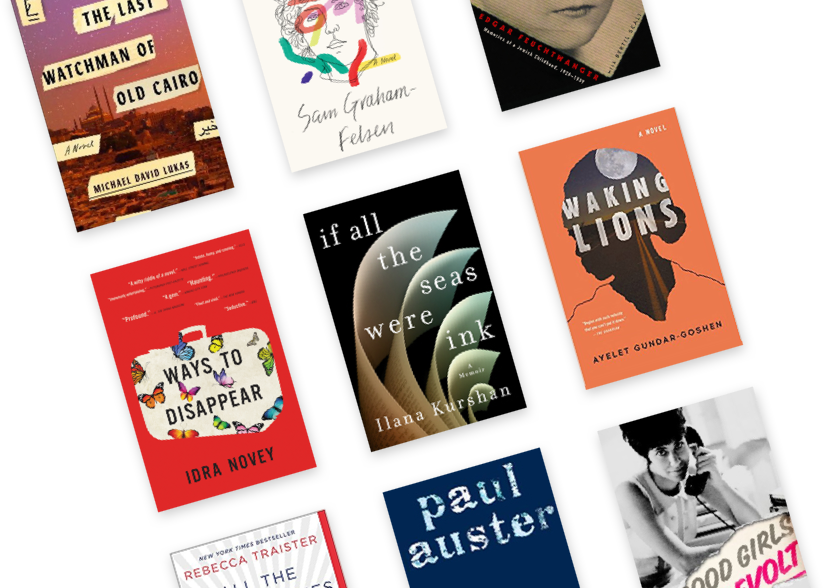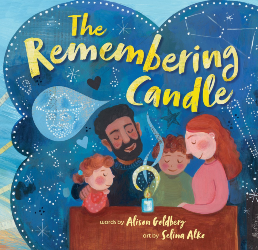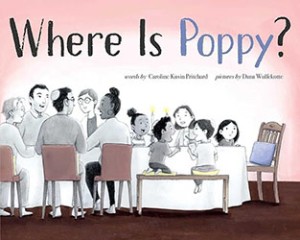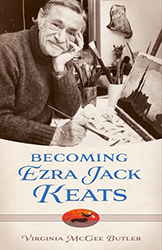Libraries are repositories of knowledge, havens for scholars, promoters of literacy. In Caroline Kusin Pritchard and Selina Alko’s picture book, the role of these institutions is even more fundamental. They are keepers of stories, essential to the communities that they serve.
In 1966, a fire destroyed many of the books in the library of New York City’s Jewish Theological Seminary. This catastrophe brought out many rescuers, as both the local and the larger communities rushed to reciprocate the care they had received from this irreplaceable treasure. With a powerfully uplifting text and richly allusive pictures, The Keeper of Stories chronicles the fire and its aftermath, ensuring that this story will not be forgotten.
The book begins by placing the library in context. Founded in 1893, it had long housed every category of book imaginable. There are “precious stories” from Jewish history, secular works, and children’s books. Alko’s illustrations, with their signature collage style, feature Torah scrolls, books, and letters emerging from open volumes into flight. An observant Jew selects a volume from a shelf of religious books, while a woman stands on her toes to either select or shelve To Kill a Mockingbird. A copy of The Snowy Day lies on the floor, near a little boy wearing a kippah. The stories kept in this library are clearly for everyone.
As fire attacks the building, Pritchard’s narrative builds in intensity. She repeats, with meaningful variations, one incantatory phrase: “keep our stories alive.” Enumerating the actual process of saving the remaining books from destruction, the words also celebrate the heroism of dedicated volunteers. Beginning with first responders from the fire department, and continuing to include rabbis, children, students, and neighbors, everyone cooperates to save the stories from oblivion. Pritchard uses both information and metaphor to produce her effect. The building is “wounded,” but “an unbreakable human chain” is dedicated to the task of repair. Water can be as destructive to books as the fire itself, and Pritchard describes the inventive methods used to counter that effect. Vacuum pressure, wind, and finally, paper towels inserted between pages are labor-intensive to use, but effective.
Alko elevates the well-known idea of many hands joining together to accomplish a goal. She captures the scale of both the disaster and its solution in scenes of relentless activity. A series of hands passes books between helpers, including specific titles that give evidence of the collection’s breadth. One two-page spread converts the library into the image of a giant book, containing within its pages the materials of book repair and their meticulous use by one woman hard at work. Another page features two scenes separated by white space. One depicts the joy of a woman, wearing a tallit and kippah, as she reads to a group of children. The other, poignantly, shows the reverent burial of Torah scrolls. Another metaphor concludes the story of the library fire. The Jewish Theological Seminary’s emblem contains words from the biblical account of the burning bush. In Alko’s picture, a massive blue-and-white star, superimposed on a shelf of books, also encases these words. The star appears to be standing guard as a girl ascends a ladder to retrieve a book. Slightly altering the powerful words, Pritchard reminds readers that “our stories were not consumed,” reaffirming that libraries have been guardians of Jewish history.
Emily Schneider writes about literature, feminism, and culture for Tablet, The Forward, The Horn Book, and other publications, and writes about children’s books on her blog. She has a Ph.D. in Romance Languages and Literatures.





